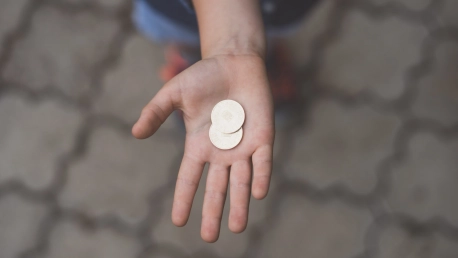2020 is already a historical year and everybody knows that life as we know it won’t be the same after the COVID-19 crisis is over. In this context, Amazon thought they needed to continue their journey of delivering intuitive innovations.
Recently, the giant retailer announced the arrival of Amazon One, a contactless palm reading device, designed to take the customer experience to the next level by reducing friction and simplifying in-store operations.
“We built Amazon One to offer just that—a quick, reliable, and secure way for people to identify themselves or authorize a transaction while moving seamlessly through their day,” declared Dilip Kumar, Vice President of Physical Retail and Technology at Amazon.
Customers will basically be able to turn their palms into virtual credit cards and complete their transactions without nothing more than… themselves.
Why palm recognition?
“We selected palm recognition for a few important reasons. One reason was that palm recognition is considered more private than some biometric alternatives because you can’t determine a person’s identity by looking at an image of their palm. It also requires someone to make an intentional gesture by holding their palm over the device to use. And it’s contactless, which we think customers will appreciate, especially in current times. Ultimately, using a palm as a biometric identifier puts customers in control of when and where they use the service,” revealed Kumar.
Amazon One comes after 2 years since the arrival of Amazon Go, a US chain of convenience stores, partially automated, set to revolutionize the physical retail store experience.
Paying with your palm is a concept of futuristic convenience stores and may, at first, not sound like a big deal. However, the technology behind it may hold huge potential for other activities such as boarding a plane, entering a football game, or identifying yourself at the workplace.
Amazon One uses biometric technology to analyze and measure a person’s unique palm characteristics. The vision technology behind Amazon One allows the tool to evaluate multiple aspects of a person’s palm and create her unique palm signature.
The global biometric technologies market is predicted to reach around 19 billion U.S. dollars this year. The contactless biometric technologies are also expected to reach over 8 billion U.S. dollars. These technologies are expanding their usability and are becoming more and more affordable to customers.
How safe is Amazon One?
“In comparison with other forms of identifiers such as physical devices, this form of biometric authentication is based on physical characteristics that stay constant throughout one’s lifetime and are more difficult to fake, change or steal,” explains Dr. Basel Halak of the Electronics and Computer Science School at the University of Southampton.
Amazon’s new palm scanner is secured by multiple protection controls and a user’s palm scans are never stored on the device, but rather encrypted and sent to a secured cloud location. Kumar also confirmed that customers can delete their biometric data at any time and have complete control over their options.
Although Amazon insisted on highlighting that their new palm paying device is a secure technology, privacy group Big Brother Watch has another opinion: “No one should have to provide biometric data in order to buy goods or services. Amazon’s attempt to normalize biometric payment and home surveillance devices risks building a world in which we’re more easily tracked and recorded, which will inevitably disempower citizens.”
Conclusion
When it comes to new technologies, one thing is for sure: only through putting them into practice can we get to uncover their true potential, usability, and determine whether it’s safe or not to adopt them. Undeniably, this applies to Amazon’s biometric payment system as well, so we might need to wait a little bit more to find out if this technology builds for a secure digitized future.









